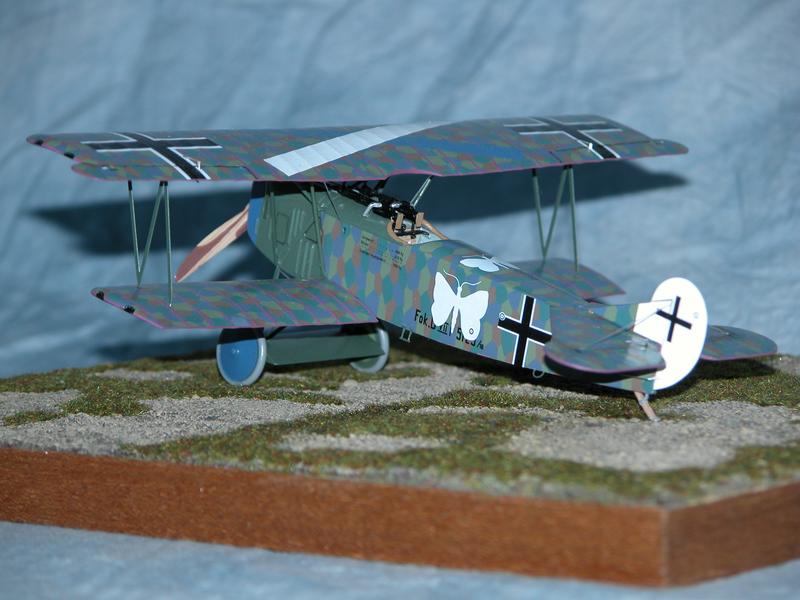
This 1/48 DML model represents the veteran Dr.I 139/17 whilst in service with Jasta 5 during May of 1918.
Dr.I 139/17 was one of 12 aircraft dispatched from the Fokker factory at Schwerin on 12 December 1917 and was delivered to Ltn. Lothar von Ricthofen’s Jasta 11. Ltn. von Contra is one Jasta 11 pilot known to have flown it in Feb 1918.
The aircraft is finished in the streaky Fokker factory finish. This finish can be difficult to replicate, but by patiently building up the colour, good results can be achieved. You may use a base coat such as an enamel-based paint while you apply the streaking with acrylic paints. If you are unhappy with the results, immediately strip the acrylics with a remover that will not affect your enamel base.
The aircraft arrived from the factory with black iron cross insignias painted on large white cross-fields. These cross-fields were often overpainted in the field leaving 25mm borders around the iron cross insignia. The order to convert to straight-sided cross-dated March 17th 1918 resulted in the cross style that I used on the model. The rudder is white with the appropriate cross style painted in black.
The original personal markings consisted of horizontal white fuselage stripe and a pale (possibly blue) disc applied to the fuselage sides as well as possibly to the turtledeck Along the way it eventually acquired a full set of Jasta 11 markings consisting of red cowl and interplane struts. The cabane struts, landing gear struts, wheel centres and wingtip skids could also acquire a coat of Jasta 11 red. Based on the May 1918 photo of this aircraft, the wing tip skids appear to have been in factory finish.
In May 1918 Jasta 5 shared the same airfield as JG.1 and was the recipient of at least 11 hand-me-down triplanes from Jasta 6 and Jasta 11. These units were re-equipping with the superb Fokker D.VII fighter. Jasta 5 exchanged it’s worn out Albatros D.V /D.Va fighters for equally worn out examples of Anthony Fokker’s quirky triplane.
The May 1918 photo shows changes made to the personal markings with the disc overpainted. A white vertical stripe had at some point been added to the fuselage. The engine cowl, cabane struts, landing gear struts and wheel centres most likely remained in the red overpainting they received at Jasta 11. The red interplane struts were overpainted in possibly Jasta 5 green or Fokker green.
The triplanes tail most likely in green, as Jasta 5 was well known on both sides of the lines as the “Green Tails”.
The formidable Jasta 5 ace Josef Mai’s flight log shows he flew Dr.I 139/17 on May 15th 1918 to score his 12th victory over a Bristol F2B of the RAF’s 11 Sqdn.















